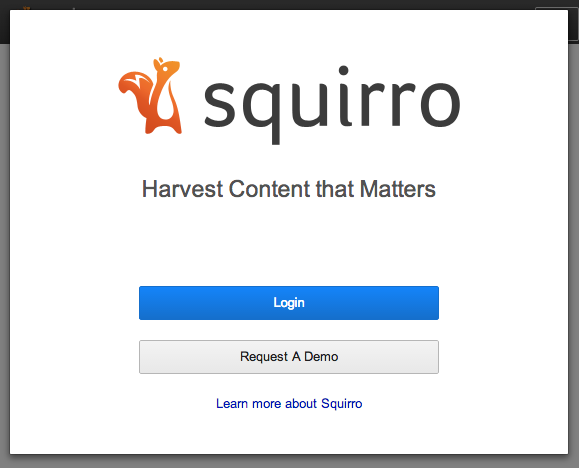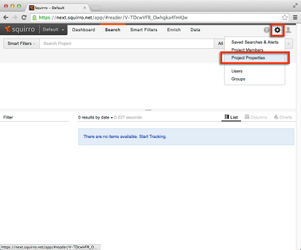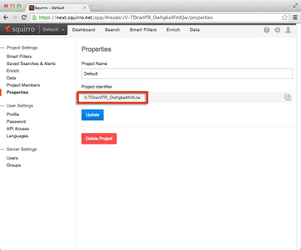...
In a browser, open Squirro by visiting http://localhost:8300/. Squirro prompts you to log in, as shown in the following example(see Connecting to Squirro if you are unsure about how to get there).
2.2.3. Create a Squirro Account
...
Replace the value of the vSquirroProjectID variable with the project id. To retrieve the The project identifier select can be retrieved from the project properties on https://squirro.com/app (see Endpoint Mapping for more informationsettings (see also Connecting to Squirro).
The project identifier can be copied to the clipboard. In this example it is V-TDcwVFR_Owhgka4fmKJw.
...
- Reload the data by choosing File -> Reload from the QlikView menu. QlikView will display a security alert warning about the
EXECUTEstatement. - Go ahead and click the Override Security, Execute This Statement button to continue executing the script, which begins the import process.
- While loading data, the bulk loader writes a log in the directory where the QlikView document is located. Open the
bulk.logfile in this location and scroll to the bottom. If you see any errors, consult /wiki/spaces/WIP/pages/2949372.
2.6. Verify Data
- Start Connect to Squirro again by opening http://localhost:8300/ in your in the browser.
- If necessary, sign in using the email address and password you chose earlier.The library now shows a project with the name
Apache Http Server Bug Reports. - Navigate the interface to become familiar with the example project.
...


